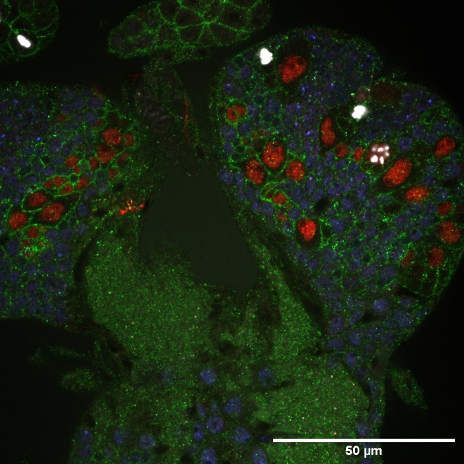You are well on your way through embryogenesis!
Your single cell has divided and divided again to become many cells, which move around inside your eggshell to produce different layers
Insulin
Dorothy Hodgkin
Insulin Research Today
Fruit fly brain showing neural stem cells in red and the insulin receptor in green. Dividing cells are marked in white. (Imaged by Maire Brace)
-
From start to finish,
new to old
Count the years
these walls saw
a scientist first open
then close the door
-
How many years was the Cavendish Laboratory open?
* This answer is a number (not text).
“I was captured for life by chemistry and by crystals”
— Dorothy Hodgkin, aged 10, from ‘A Life: Dorothy Hodgkin’ by G. Ferry.



